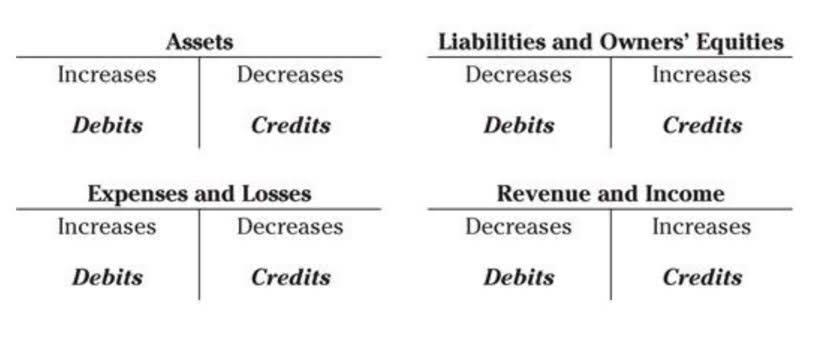
With CaseFox’s integration, your law firm can optimize financial management, improve efficiency, and drive profitability. Accounting for law firms is the process of recording and managing a firm’s financial activities. For example, this includes tracking income, expenses, overseeing trust accounts, and monitoring client billing. It also encompasses creating and managing budgets, producing financial reports, and managing payroll.
Trust Accounting: Quick Guide for Law Firms
This type of account for US law firms is designed to keep client funds separate from a law firm’s business or operating accounts. By assigning specific codes and names to various accounts, a chart of accounts enables accurate tracking. It facilitates streamlined bookkeeping, simplifies tax preparation, and ensures compliance with regulatory requirements. With a comprehensive chart of accounts, law firms gain valuable insights into their financial health.
ABOUT CPA PRACTICE ADVISOR
Bookkeeping for lawyers allows law firms to collect key financial data, but much of the value of that data comes from how you analyze and use it. In this post, we’ll introduce the essentials of law firm accounting to help get you started. From common accounting issues to watch out for to tips many law firms find effective for financial management, read on to explore the fundamentals you should know. That way, the software’s capabilities align with law firms’ unique accounting challenges. Specifically, your firm needs software that can properly handle retainer funds, from the initial deposit through the transfer of earned funds into the operating account. Together, these statements show how your law firm is performing financially.

Revenue
Assign a unique account number to each account in your chart of accounts. This number will make it easier to reference specific accounts when recording financial transactions. The information you use to make business decisions — such as financial https://www.bookstime.com/ statements and a legal KPIs dashboard — will be more accurate. If your chart of accounts is not set up correctly, your transactions will not balance and the records for each account could be inaccurate.
- Making this mistake will lead to you having to take the following steps to setup your legal chart of accounts.
- Unearned fees (like general retainers) should be kept in a separate account so that they are not used in error.
- Client account records track the money the firm handles on behalf of its clients.
- If your law firm doesn’t already have business bank accounts, it’s time to open them.
What is a Law Firm Chart of Accounts?

Whether it means using legal accounting software to simplify and automate your accounting, hiring a professional adjusting entries legal accountant, or both—don’t be afraid to delegate when you need to. Beyond just staying organized and compliant, following best practices for accounting for law firms will help you identify growth opportunities. By establishing—and following—best practices for accounting for law firms like the examples below, you’ll be better able to help your firm stay on track.
- It also simplifies the generation of financial statements, saving time and ensuring accuracy.
- Set up an Item within the Item list for every income type, and buy no rx cialis online for General Retainer and Reimbursed Client Costs when appropriate.
- Establish separate accounts for different practice areas to track revenue and expenses.
- A critical part of the accounting process focuses on analyzing financial reports and KPIs for your law firm to uncover critical insights and make informed business decisions.
- A tailored Chart of Accounts for law firms is the key to tracking legal expenses, client billing, trust accounts, and other financial intricacies specific to the legal profession.
- To further streamline your accounting processes, use a legal-specific accounting solution.

A critical part of the accounting process focuses on analyzing financial reports and KPIs for your law firm to uncover critical insights and make informed business decisions. Accountants can help uncover cost-saving opportunities, identify the most profitable cases your firm should consider, and discover opportunities to improve cash flow. Family law firms may need accounts for alimony or child support, while corporate law firms might require accounts for mergers and acquisitions. Customization ensures the Chart of Accounts aligns with the specific financial demands of a firm’s practice areas.
After setting up the chart of accounts, the next step is to create a general ledger. The general ledger records all the financial transactions of a law firm. Each transaction gets recorded as a debit and a credit in the relevant accounts. The general ledger is the source for preparing financial statements and provides a detailed history of all financial activities. If you’re the owner of a small law firm, you need to know the essentials of bookkeeping and accounting for law firms. This way, your firm can stay compliant with ethics rules—and you can ensure you aren’t leaving money on the table.
The reason is that most lawyers are in substantial compliance with the rules. The minor infractions discovered as a result of such investigations typically result in a warning or low-level private discipline. Sadly, as the investigations following bounced check reports demonstrate, too many experienced lawyers are still unfamiliar with the rules on escrow accounts and record-keeping. The second cardinal rule is that lawyers may not deposit their own personal or business funds in their escrow or trust accounts.

Also, it facilitates monitoring of cash flow and identifies financial trends law firm chart of accounts or anomalies. Final NotesYour law firm’s chart of accounts must support accurate and compliant transaction reporting. At a minimum, your listing of financial accounts will include a pooled trust account as a segregated liability, with sub-accounts to track client retainer balances.
